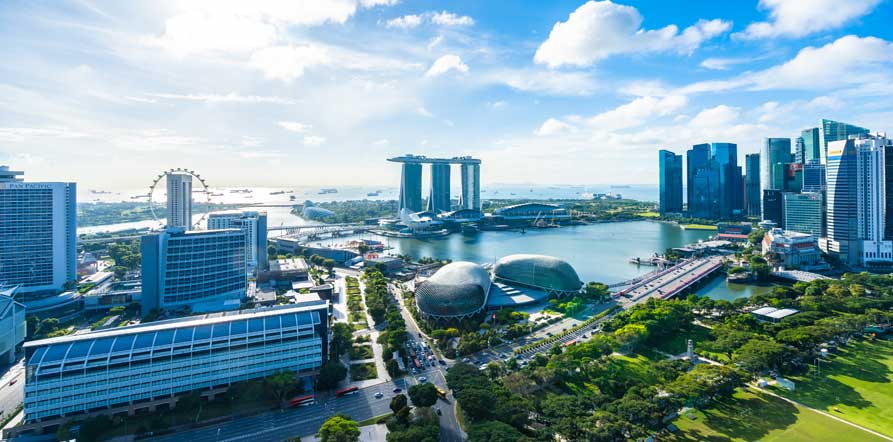
The words housing and shelter are often used synonymously, without much
thought given to it. Using shelter in place of housing is a nod towards the
ultimate purpose of housing, one of utility and not just financial interest.
Shelter, in a literal sense, is refuge or haven, exactly what housing should be
for all. A safe, secure and stable place that provides protection and privacy
from the extremes of the outside world. Many of us tend to take for granted
this fundamental necessity of shelter. A rising number of families and
individuals struggle every day to afford a stable roof over their heads, weighed
down by volatile rents, unsanitary conditions, lack of access to land and
financing, and a constant sense of fear driven by the threat of
eviction. Housing poverty is a real issue. And one that multiple governments,
across the world, have failed dismally to address. Public housing is one way by
which housing poverty can be tackled. By treating housing as a social asset and
not just a financial one, affordable and sustainable shelter can be provided for
all. Multiple regimes, across the world, have tried their hand at public housing
programmes and continue to do so. But, with the UN estimating that only 13%
of the world’s cities have affordable housing, evidently most of them are not
particularly successful. This has led to public housing to be perceived as a
‘rescue service’. A service which offers only emergency provisions to the most
vulnerable households. A last resort of sorts, in times of crisis. In Singapore,
the concept is on a different polar end altogether.
Imagine a national housing programme which provides decent, affordable and
sustainable housing for over 80% of its residents. Sounds utopian? Or,
heretical? Well, Singapore has achieved it, despite being a land scarce city,
with a population density of close to 8,000 people per square kilometre of
land. The country has been a leader in building not just sustainable cities but
also sustainable communities. Welcome to the world's largest and by far, the
most successful housing programme.
Singapore gained independence in 1959 and at the time only 9% of its
population resided in state housing. The first Prime Minister of the nation,
Lee Kuan Yew, envisioned a nation with affordable, sustainable and decent
housing for all. Today over 80% of residents live in HDB flats, with over a
million state owned apartments spread across the country. During the colonial
era there was an acute shortage of housing in the country. The city centre was
plagued with overcrowded, ethnically segregated, and unsanitary
housing blocks. The Housing Development Board (HDB) was incepted to
replace the Singapore Improvement Trust and, was tasked with the job of
housing a nation and building a sustainable city. The HDB has had an initial
target of building 10,000 low cost units annually for a period of ten years, set
in 1960. By 1965 the board had built 54,000. Units, not just Eexceeding the set
targets but also and it had rehoused rehousing over 400,000 people.
To build public housing, land reform and wealth redistribution were
carried out at a scale unimaginable in today’s day and age. On the
separation from Malaysia in 1965, the Singaporean parliament adopted all
provisions of the Malaysian constitution barring one -. The right to adequate
compensation in the case of compulsory land acquisition. A year later the
controversial Land Acquisition Act was introduced. It gave the state the
mandate to acquire land at fixed prices for the purpose of public benefit.
By 1985 the state owned 76% of land as compared to 31% in
1949.
A move from the rental mechanism to one of home ownership was also
initiated. Lee Kuan Yew dreamt of giving every citizen a stake in the country
and its future. He envisioned a society of home owners. The country’s pension
fund, Central Provident Fund, was restructured in 1968 to help turn this dream
into a reality. Employees and employers’ contributions could be withdrawn for
down payment and mortgage payments for HDB flats which were sold at 99-
year leases. The 99-year lease ensured that public housing remained a
property of the state, but at the same time also built a nation of home-
owners. Being a home owner became part of the Singaporean Identity.
Housing was made to be affordable, yes, and also inclusive. An ethnic
integration policy was introduced in 1989 to avoid clustering and formation of
ghettos.
The housing programme was essentially pillared on the above mentioned
polices. That of land reform, home ownership and ethnic integration. All this
might sound near perfect but, the state has faced its share of criticism and
rightly so. The biggest issue being the autocratic nature of the laws. This is also
the reason why the model cannot be replicated in today’s world. It is difficult
to even imagine a situation where the state is allowed to forcefully take over
majority of the land while providing inadequate compensation. The
Singaporean government was and continues to be a technocratic one, and the
1960’s were a golden opportunity where they had the scope to implement any
policy they wished to in the name of nation building. And, it did wonders for
them. The same model could have led to very different consequences. A
different time period, a different populace, or a change in the ruling
regime, among many other factors could have derailed the programme.
To sum it up in Lee Kuan Yew’s words, it was a “chance of a lifetime” for
Singapore. They made the most of it and, continue to reap its benefits to date.